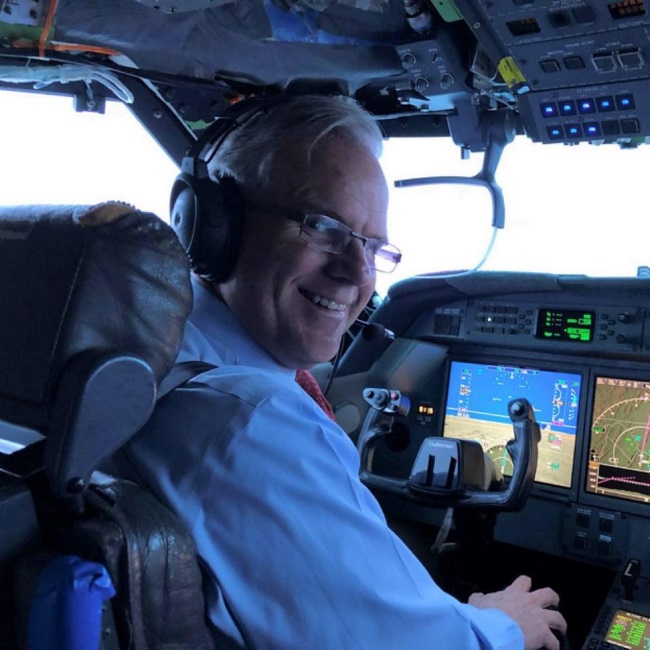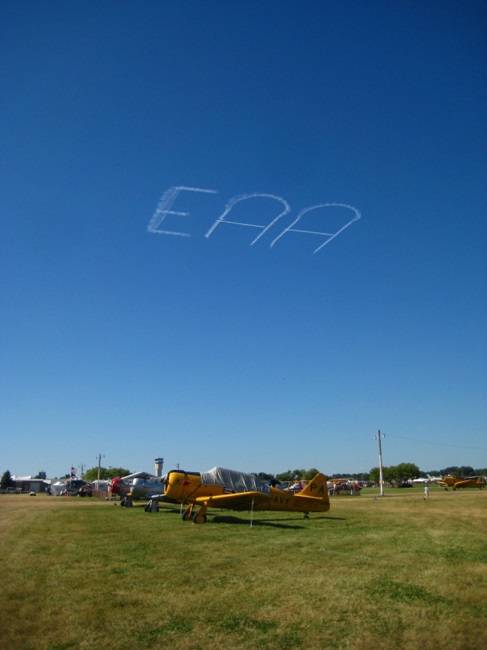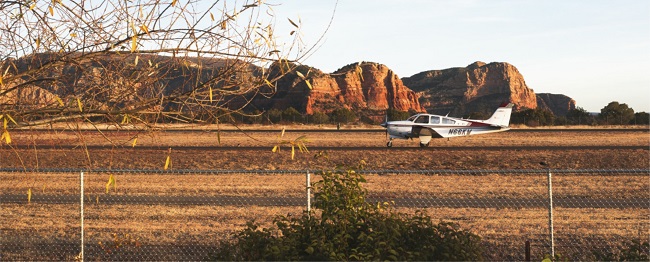
Well, it’s summer, it’s hot, and the comfortable flying time is rather limited. Fortunately, I’m in Wisconsin attending the EAA AirVenture fly in while writing this. As a result, this month’s report is going to be a bit abbreviated. It’s different to see everything green and relatively lush. It’s also going to be interesting to see what’s happening and what’s new at AirVenture ’18.
2018 AirVenture
At the EAA 2018 AirVenture Fly In, acting FAA Administrator, Daniel Elwell, addressed a gathering of attendees, covering a span of subjects that impact the general aviation community, including the FAA’s reassessment of its certification standards for pilots. He stated they have changed the airmen certification standards so that the tests now focus less on memorization, and more on critical thinking and risk management. Administrator Elwell exclaimed the FAA’s BasicMed alternative to the third class medical certificate, which allows pilots to be examined by their own doctors, is progressing well. He said that since the program was introduced in May of 2017, more than 36,000 pilots have signed up and have met the requirements of the program. The FAA is planning to evaluate and issue a report on how the BasicMed program is operating after approximately four years of operation.

Elwell also touched on the proliferation of new technologies in aviation, highlighting the work the FAA is doing with the industry to bring affordable safety enhancing equipment into all cockpits and recognizing the safety innovations coming out of the general aviation community, citing as an example, the EAA’s groundbreaking STC program that has fostered new growth in the certified avionics market. Per the administrator, the ingenuity, especially in the experimental side of aviation, brings into the cockpit those things that aviators know they need, such as better weather reporting and situational awareness. This community finds innovative, usually affordable, and simpler ways to accomplish those complex things.
In addressing the ADS-B issue, he reaffirmed that the FAA has mandated that most aircraft must be equipped with ADS-B out by January 2020, and the deadline will not be extended. He further stated 10,000 pilots took advantage of the equipage incentive offered last year, and they are actively looking for additional ways to encourage installation of ADS-B equipment in all aircraft.
Elwell also talked about what the FAA is doing to ensure that the integration of UAS into the national airspace proceeds safely. To that end, he stated there are participants in a pilot program to demonstrate different applications of UAS that are under development and the FAA will gather data to see what it is that the UAS community has to offer and how they plan to operate under controlled conditions. The FAA is concentrating on integration, not segregation, and he assured us, that they are not going to go forward with UAS operations in manned airspace until they know it’s safe.
In addressing the pilot shortage facing the industry, Elwell said it’s not an issue that the FAA can tackle on its own. The entire aviation community must get involved in welcoming and inspiring the next generation to get involved. “General aviation is the heart of America’s aviation system,” he said. “It’s one of those things that set us off from the rest of the world. We have to protect the legacy we inherited from the pioneers that came before us, and we need to make it even stronger so we can pass it on to the next generation.” He apparently is a big supporter of the EAA Young Eagles program, introducing young people to aviation. Based on his comments at AirVenture, it would appear that he is a supporter of general aviation, and given his extensive aviation background, it would be good if he got selected to fill the open FAA Administrator position.

ADS-B Equipment
I have had heard several people wonder what the FAA may do in requiring that the ADS-B equipment we have installed is in continued airworthy condition. While at AirVenture, I approached the FAA person present that was responsible for the ADS-B program and asked what the FAA had in mind for regular inspection requirements for confirming the ADS-B equipment installed in our airplane is in compliance with existing FAA requirements. After a pause, the response was, “That’s a good question. Nobody has asked that question before, and we have never discussed it in any of our meetings.” I thought this was a bit surprising, and I was told they will have to check into it, and he didn’t think there will be an inspection requirement. We shall see.
MISCELLANEOUS ITEMS
Falcon Field (FFZ) is still in the process of upgrading the airfield electrical system, and there may be taxiway detours. Be alert, and check FFZ NOTAMS.
Deer Valley Airport (DVT) still has run up area construction projects in process, so check DVT NOTAMS and use caution.
In other words, before taking off, always be sure to check for NOTAMS at your destination airport so you don’t have an unexpected surprise awaiting you. Many of the airports around the state have significant construction projects in progress. Always fly informed.
GPS interference testing is still happening, and there were last minute notices received from the FAA in this last reporting period. Some of these tests could have impacted flight operations in Arizona. Again, if you encounter an unexplained interruption in GPS navigation lasting several minutes, inform ATC with the time, date, and location of signal loss.
Flight safety wasn’t great this last reporting period with the NTSB reporting five accidents occurring in Arizona. Unfortunately one of them involved a pilot fatality. See my August Accident Summary for the details.
As you are aware, APA is working with several airports around the state to update their Airport Master Plans. Currently, APA is assisting Falcon Field (FFZ), Superior Municipal Airport (E81), Sedona Airport (SEZ), Flagstaff (FLG), and Grand Canyon Airport (GCN) airports in their Master Plan update process, providing the pilot and aircraft owner’s perspective.

THINGS TO DO - PLACES TO GO FOR BREAKFAST:
- The fly in breakfast at Coolidge Municipal Airport (P08), which was on the first Saturday of the month, is on hold for the summer and will restart in October.
- The Falcon Field EAA Warbirds Squadron fly in breakfast and car show, which was on the third Saturday of the month, is on summer hold and will resume in October.
- The third Saturday of the month there is still a fly in breakfast at Benson (E95) at Southwest Aviation. There are special fuel prices for breakfast attendees.
- The Grapevine Airstrip (88AZ) next to Roosevelt Lake is open to fly into, but the BBQ lunch hosted by APA on the third weekend each month is also on summer hold until September. Portable toilet not available until September.
- The last Saturday of the month there is a fly in breakfast at Casa Grande Municipal Airport (CGZ). The Airport’s restaurant, Foxtrot Cafe, operating in the air cooled Terminal Building, is open 6:30am to 2:00pm Monday thru Saturday. On the last Saturday of the month they have a “Fly in Breakfast Special” available on the menu. The price for adults is $8 and kids $5.
- At Tucson’s Ryan Field Airport, Richie’s Cafe is serving breakfast and lunch daily. The hours are 6:00 am to 2:00 pm
Check with the APA Getaway Flights program and the online calendar for fun weekend places to fly.
I hope everyone has been able to get some safe flying time in last month. As for me, like many of you, my flying seems to get limited to the weekends, and we sure have been encountering a lot of windy weekends lately. Anyway, it seems like I’ve gained a lot of crosswind landing experience lately. Flying a light taildragger, some of that experience has been a bit challenging and exciting at times, but what the heck, it’s all been fun, exciting or not. However, from a safety standpoint, we have been encountering a lot of accidents lately, and some of them were pretty bad accidents. Please make certain your aircraft is in good operating condition and fly safely!
First off, I want to thank those that made the annual APA meeting in May. It was good to reconnect with some of you once again. Because there were no nominations put forth, the directors whose terms were expiring consented to running for office again and were reelected. The directors will be meeting in June to elect the officers for 2016-17, and the president elect will start the appointment of chairpersons for the various standing committees.
As time grows shorter for when we will be required to have ADS-B out equipment installed in our airplanes, there continues to be new information released regarding both programs and equipment. It’s pretty apparent there won’t be any slippage in the mandated implementation date, but there continues to be new information on equipment and compliance. Initially, there were a lot of questions on required equipment and how each installation would have to be accomplished, inspected, and certified. In what I thought was a major breakthrough by the FAA in making implementation much easier and cheaper for us, the FAA announced a new policy that simplifies ADS-B Out installations.
The FAA released a policy memo (AFS-360-2016-03-02) on March 2 that updates guidance on installation of ADS-B out systems, essentially allowing avionics shops to install ADS-B equipment on aircraft not covered by a supplemental type certificate (STC) and without having to obtain a new STC. The installer does have to obtain permission from the original STC holder. Earlier in the ADS-B upgrade process, the FAA was requiring that each aircraft model have its own STC. The FAA was concerned and wanted to ensure, as new equipment hit the market, that it worked correctly, so the original policy stated that it could only be installed via STC. They believed this would maintain a high level of their involvement and ensure that aircraft entering airspace (where ADS-B is required) are operating as intended and not creating chaos.
Now the FAA has issued the new policy, and it basically states, if the installation is a major alteration, it will still need field approval. This may be the case where a new antenna needs to be installed on a pressurized airplane, for example. A simple ADS-B out installation in a non-pressurized airplane will be a minor alteration and can be signed off by an A&P mechanic holding an Inspection Authorization, or by a Part 145 repair station, and doesn’t require direct FAA involvement. Basically, it’s a simple radio installation. With this change, the much feared bottleneck of getting last minute certified installations accomplished has been averted, and with a significant savings for many of us. (You can read the entire FAA March 2 Memo AFS-360-2016-03-02 here…)
MISCELLANEOUS ITEMS
The FAA is in the process of publishing a list of perhaps over 300 VORs they plan to decommission across the country. They will evaluate the impact of each VOR on approaches, departures, enroute, etc, and hopefully, they will also look to local users for comment. As soon as we obtain a list of those VORs on the decommissioning list that are in Arizona, we will advise you and the APA will be submitting the appropriate commentary to the FAA.
In a move to ensure that the Third-Class Medical Reform gets through the U.S. legislature, I noticed that it got attached to a defense funding bill that passed through the Senate’s Armed Services Committee. Passing with a 23-3 in favor vote, the bill, which would authorize $602 billion for the Department of Defense and other national security programs, also includes the pilot medical changes in the Pilot’s Bill of Rights 2. This action is in addition to the same thing that is attached to the FAA funding bill presently in process. I guess we now have to wait and see what comes out of the House of Representatives and finally goes to the President.
Two new instrument procedures will be published for Cottonwood Airport (P52) on May 26: RNAV (GPS) Runway 32, and MINGY One Departure (RNAV).
One of the changes on the Phoenix Sectional and TAC charts on May 28 will be the deletion of several abandoned airports. What the identifiers were or their locations was not given. Better check to see that your favorite airport is not one of them.
If you fly into Ak Chin Regional Airport (A39), be advised they now have an AWOS in service on 126.90.
Significant construction is going on at Gateway Airport (IWA) and the ILS will be down from time to time. If you are doing instrument training, be sure to check NOTAMS before taking off to check on availability.
Be aware, there is a significant amount of airport construction activity going on many of the airports in the Phoenix and Tucson areas, and also around the state. Be sure to check for NOTAMs before taking off for another airport so you don’t encounter a nasty surprise when you get there.
The June accident reporting period was certainly not very good. During this reporting period there were six accidents reported with two of them being fatal, involving three fatalities. Three of the accidents reported this period were devoid of information and it would be safe to assume they were not serious from a personal injury standpoint. See my June accident summary for details, and please make certain the airplane you are flying is airworthy and fly carefully. We don’t want to continue at this present rate.
APA is still working with various airports around the state, providing the pilot and aircraft owner perspective in the process of updating their Airport Master Plans. An update of the Sedona Airport (SED) and Grand Canyon Airport (GCN) master plans are currently in process.
THINGS TO DO - PLACES TO GO FOR BREAKFAST:
The fly in breakfast at Coolidge Municipal Airport (P08) on the first Saturday of the month has stopped and will restart the first Saturday in October.
The second Saturday of the month, Ryan Field (RYN) fly in breakfast is available at the restaurant next door.
The Falcon Field EAA Warbirds Squadron fly in breakfast and car show on the third Saturday has ceased operation for the summer and will restart in October.
The third Saturday of the month there is a fly in breakfast at Benson (E95) at Southwest Aviation. (There are special fuel prices for breakfast attendees.)
The monthly fly in to Grapevine Airstrip, next to Roosevelt Lake, will stop for the summer, but will resume on the third Saturday of September.
The last Saturday of the month there is still a fly in breakfast at Casa Grande Municipal Airport (CGZ). The Airport’s restaurant, Foxtrot Cafe, operating in the Terminal Building, is open 6:30am to 2:00pm Monday thru Saturday. On the last Saturday of the month they have a “Fly in Breakfast Special” available on the menu; the price for adults is $7 and kids $5.
Check with the APA Getaway Flights program and
the online calendar for fun weekend places to fly.
thru this restricted area at any time. The restricted area isn’t very large, and I don’t think the UAV student pilots using the area are any better than our student pilots, and I would consider giving the area a wide berth. Be aware, and avoid a serious problem.
Be aware, there is going to be a significant amount of airport construction activity still going on in the Phoenix and Tucson areas, and around the state. Be sure to check for NOTAMs before taking off for another airport so you don’t encounter a nasty surprise when you get there. Also, be sure to add TFRs to your preflight checklist.
The past aviation accident reporting period was relatively good with only one accident being reported by the NTSB. The bad news, however, was that it did involve four serious injuries. Perhaps the efforts put forth by the Wings Safety Teams with all the safety briefings has begun to pay off. Based on the low accident/injury rate in 2015, I hope we can get the pilots in Arizona to continue this trend and have a safe flying year in 2016. For more details go to my February Aviation Accident Summary report. By next month, enough of the 2015 NTSB accident information should be available to permit preparation of an accurate year end summary and comparison to previous years.
APA is still working with various airports around the state, providing the pilot and aircraft owner perspective in the process of updating their Airport Master Plans. An update of the Sedona Airport (SED), Deer Valley Airport (DVT), and Grand Canyon Airport (GCN) master plans are currently in process.
THINGS TO DO - PLACES TO GO FOR BREAKFAST:
·The firstSaturdayof the month fly in breakfast is at Coolidge Municipal Airport (P08).
·The secondSaturdayof the month, Ryan Field (RYN) fly in buffet breakfast should have restarted. However, breakfast is available at the restaurant next door.
·The Falcon Field EAA Warbirds Squadron fly in breakfast and car show is on the thirdSaturday.
·The thirdSaturdayof the month there is a fly in breakfast at Benson (E95) at Southwest Aviation. (There are special fuel prices for breakfast attendees.)
·Also on the third Saturday, around noon, a donation lunch is served by the APA at the USFS Grapevine Airstrip over at Roosevelt Lake.
·The last Saturday of the month there is still a fly in breakfast at Casa Grande Municipal Airport (CGZ). The Airport’s restaurant, Foxtrot Cafe, operating in the Terminal Building, is open 6:30am to 2:00pmMondaythruSaturday. On the last Saturday of the month they have a “Fly in Breakfast Special” available on the menu; the price for adults is $7 and kids $5.
Check with the
APA Getaway Flights
program and online calendar
for fun weekend places to fly.